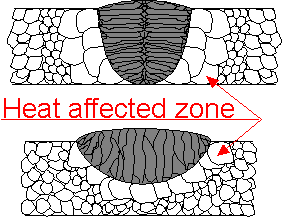 Mechanical properties are directly related to the material structure of weld and base metal. Weld metal is comprised of the metals of electrode and molten edges of base parts. High temperature affects the structure of base metal. Grain size enlarges at boundaries of the weld joint - in the heat affected zone (HAZ). Large grains have relatively poor mechanical properties. Outside the HAZ grain size is the same as in the base metal.
Mechanical properties are directly related to the material structure of weld and base metal. Weld metal is comprised of the metals of electrode and molten edges of base parts. High temperature affects the structure of base metal. Grain size enlarges at boundaries of the weld joint - in the heat affected zone (HAZ). Large grains have relatively poor mechanical properties. Outside the HAZ grain size is the same as in the base metal.
In molten weld metal the grains grow from colder parts of base metal.
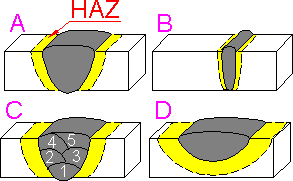 Lower amounts of molten metal correspond to lower heat and smaller HAZ. HAZ is smaller for electron beam welding:
Lower amounts of molten metal correspond to lower heat and smaller HAZ. HAZ is smaller for electron beam welding:
A. Arc welding, butt-joint
B. Electron beam welding, butt-joint
C. Multi-layer arc welding, butt-joint
D. Gas welding, build-up weld
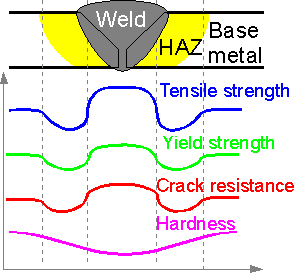 For steel welds mechanical properties are usually highest at the weld. The hardness is lower in the weld.
For steel welds mechanical properties are usually highest at the weld. The hardness is lower in the weld.
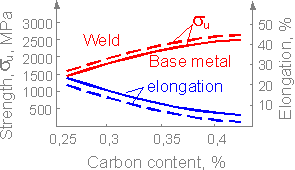 Mechanical properties of a high-strength steel weld depend on carbon content in the material. Increase in strength corresponds to decrease in ductility (elongation is a measure of ductility).
Mechanical properties of a high-strength steel weld depend on carbon content in the material. Increase in strength corresponds to decrease in ductility (elongation is a measure of ductility).
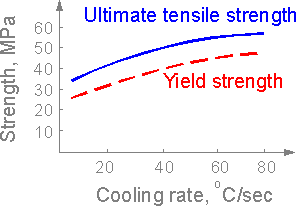 Fast cooling, similar to quenching, could result in strength increase. Yield strength and ultimate tensile strength increase with higher cooling rate.
Fast cooling, similar to quenching, could result in strength increase. Yield strength and ultimate tensile strength increase with higher cooling rate.
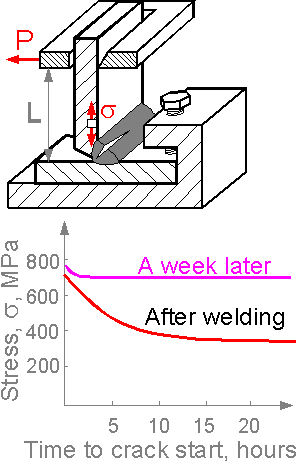 There are special tests for weld joints. The welded specimen is tested until a crack first starts. The weld is stronger if it lies for a long time before a test.
There are special tests for weld joints. The welded specimen is tested until a crack first starts. The weld is stronger if it lies for a long time before a test.
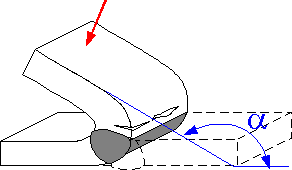 A large angle a characterizes the ductility of the weld joint. There are welded joints for which the angle could reach 180o.
A large angle a characterizes the ductility of the weld joint. There are welded joints for which the angle could reach 180o.
 2015-08-13
2015-08-13 490
490








